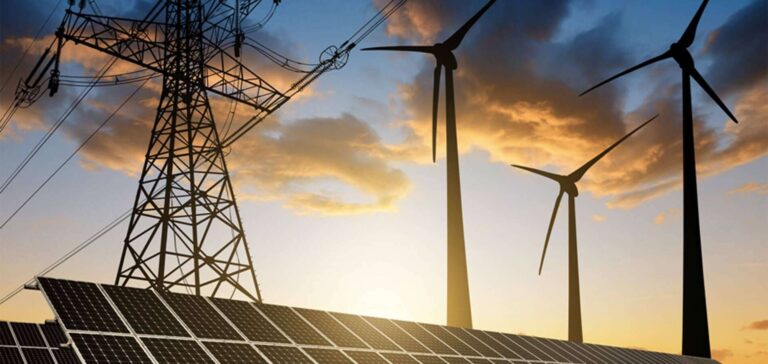A renewable energies analysis of their capacity to integrate the French energy mix has just been published at the end of January 2021.
This study Conditions and prerequisites in terms of technical feasibility for a power system with a high proportion of renewables by 2050 follows a commission from the French Ministry of Ecological Transition to IEA and RTE. She reveals four key challenges for a successful energy transition in France. The ultimate aim is to analyze the feasibility of France’s targets for achieving carbon neutrality by 2050.
Read on energynews.com: Energy transition: $500 billion invested by 2020
Analysis of renewable energies and the challenges for the French energy mix
According to the report, the analysis of renewable energies (RE) and their capacity to be integrated into the French electricity mix is conditional on a response to four technical challenges.
The aim is to achieve carbon neutrality by 2050.
Ensuring the stability of the power grid
First of all, France knows that, to achieve carbon neutrality by 2050, renewable energies and decarbonized energies such as nuclear power will have to play a substantial role in its energy mix.
France will first have to develop technologies to ensure the stability of its power grid.
The study reveals that there is scientific consensus on the theoretical stability of a power system without conventional generation.
However, the necessary technologies are not yet commercially available.
The analysis therefore encourages investment in R&D and the demonstration of large-scale pilot projects.
Read on energynews.com: France’s most powerful wind farm to produce 226 MW
Developing flexible energy consumption
Also, renewable energies are highly variable in terms of output.
This can lead to mismatches between available electricity and demand.
The analysis develops hypotheses for the storage of occasional production surpluses in the form of hydrogen, thanks to water electrolysis.
These stored surpluses would partly make up for temporary drops in renewable energy production.
Demand-side management, large-scale storage and cross-border interconnection are also analyzed as flexibilities for responding to production variability.
Future renewable energy projects will need to take into account the maturity, availability and cost of these flexibilities.
Maintaining operational reserves
The study also reveals that the sizing of operational reserves will nevertheless need to be reassessed by 2030.
These electrical reserves will need to protect the grid from the variability of renewable energy production.
Forecasting methods also need to be improved.
The analysis calls for a new regulatory framework defining better balancing of energy consumption.
It should establish requirements for the generation fleet to ensure that the power system has sufficient reserve capacity.
Read on energynews.com: Renewable energies to continue growing in 2021
Developing an efficient transmission and distribution network
Finally, the report calls for substantial efforts to be devoted to the development of electricity networks, both in transmission and distribution.
This will require a strong public commitment to long-term planning and cost assessment.
Public consultation will have to promote acceptance of the new infrastructures.
Network improvements can also be partially integrated with the renewal of aging network assets.
France has promising resources
“There’s huge room for improvement”.
In short, as Xavier Piechaczyk, President of RTE:
“To move towards a mix with high shares of variable renewable energies, we need to look at scientific, technical and industrial factors.”
Fatih Birol, Executive Director of the IEA, adds:
“The combined share of solar and wind power today represents around 10% of the electricity mix [français]. There is enormous room for improvement.”
Read on energynews.com: Wind farms in France: what do the French think?
Further analysis
Further socio-economic studies are planned, based on the conclusions of this analysis.
At the end of the year, RTE will publish a full assessment of the different electricity scenarios for achieving carbon neutrality.





















